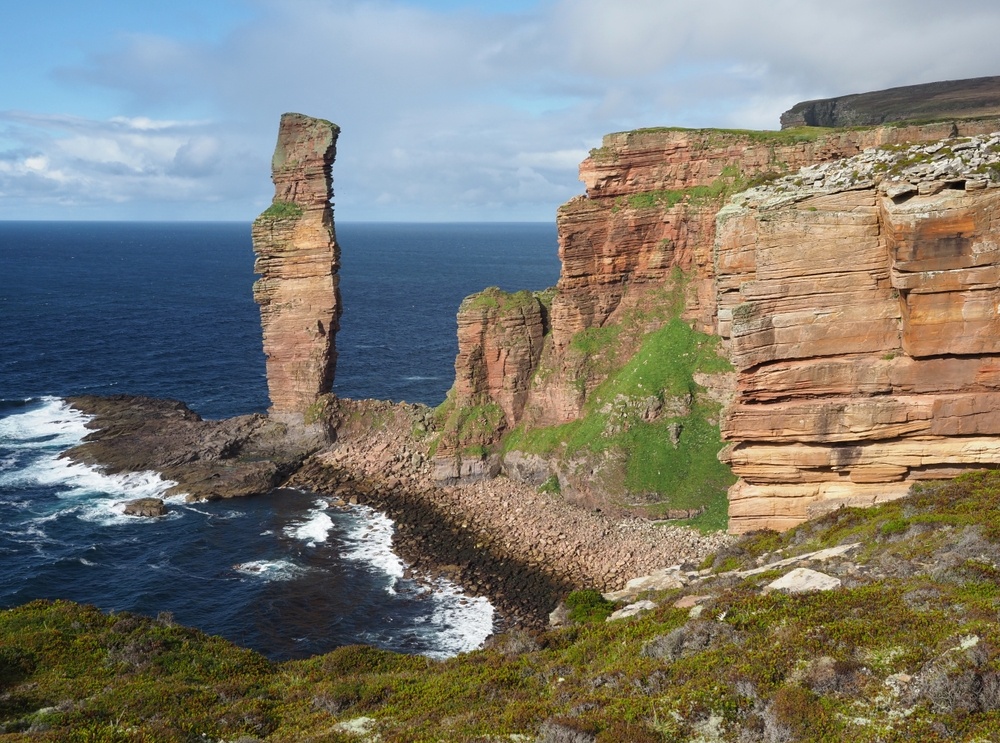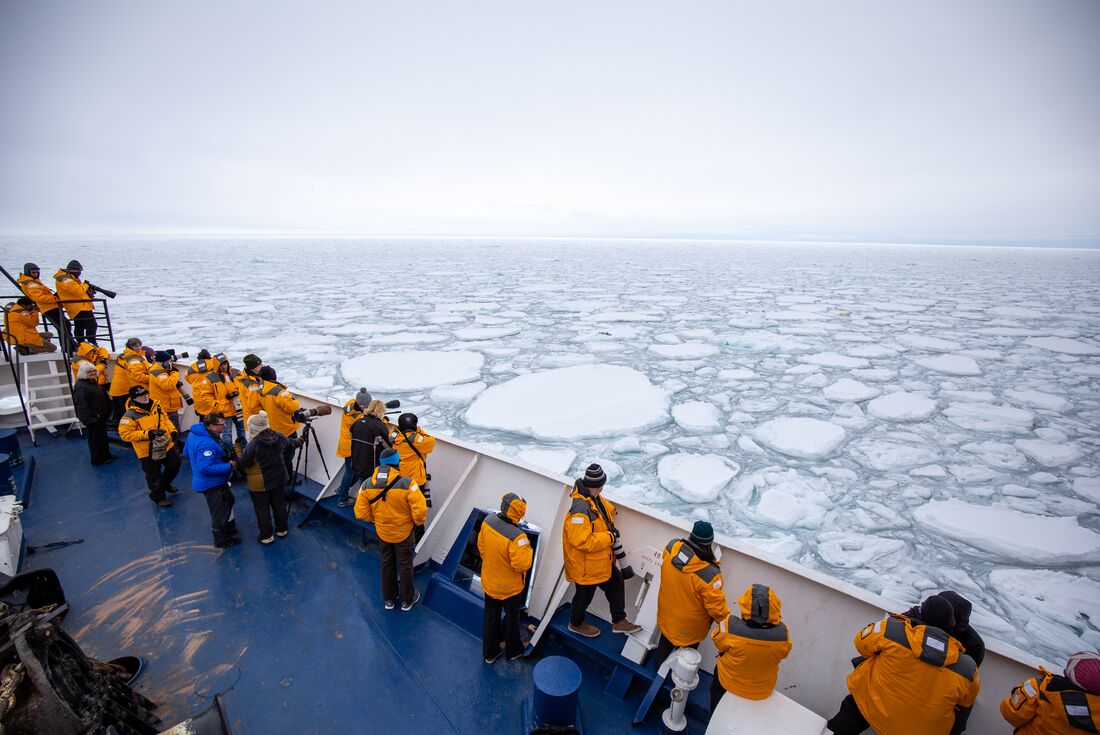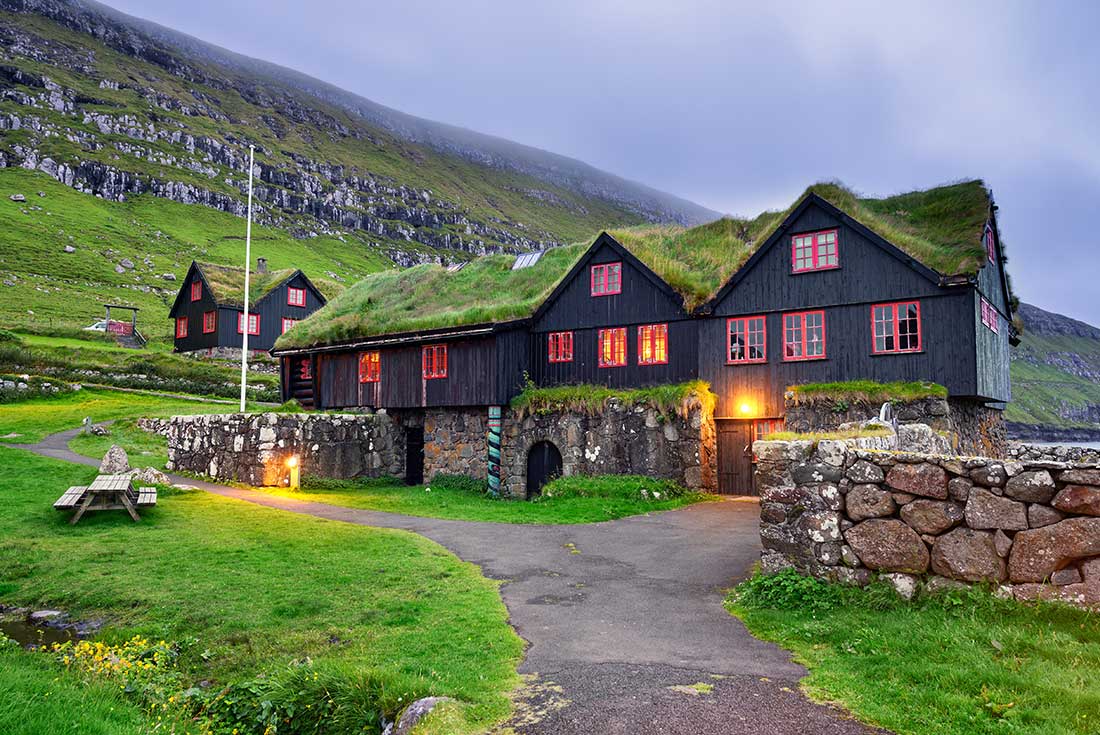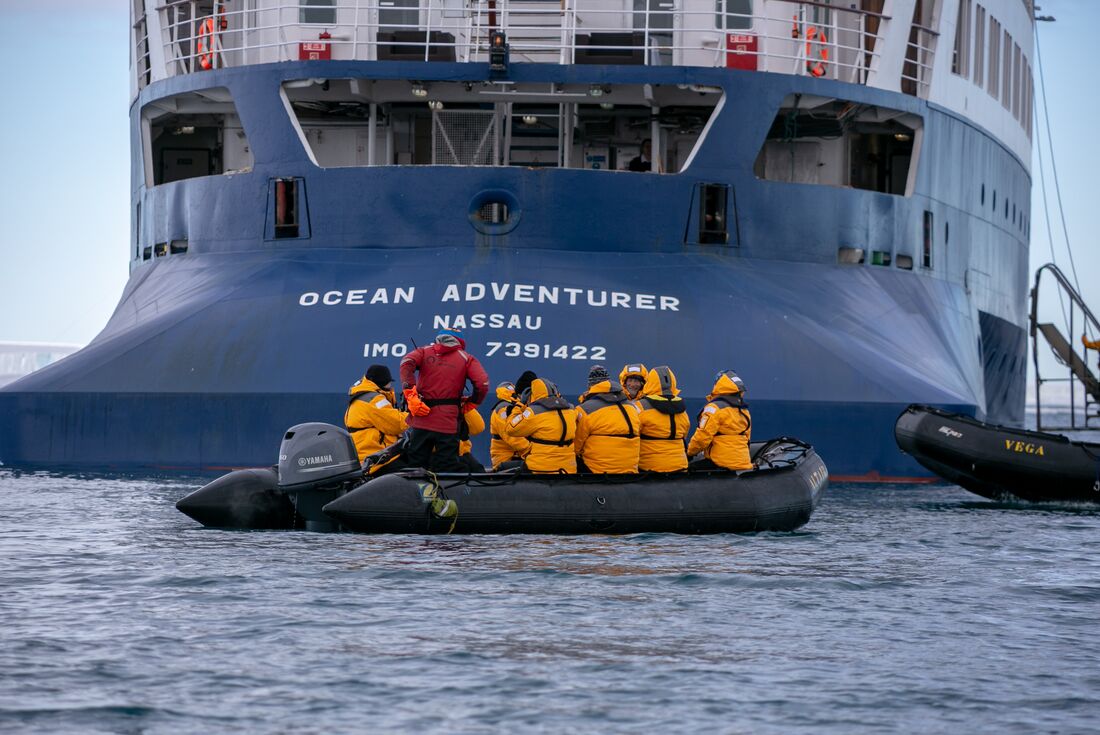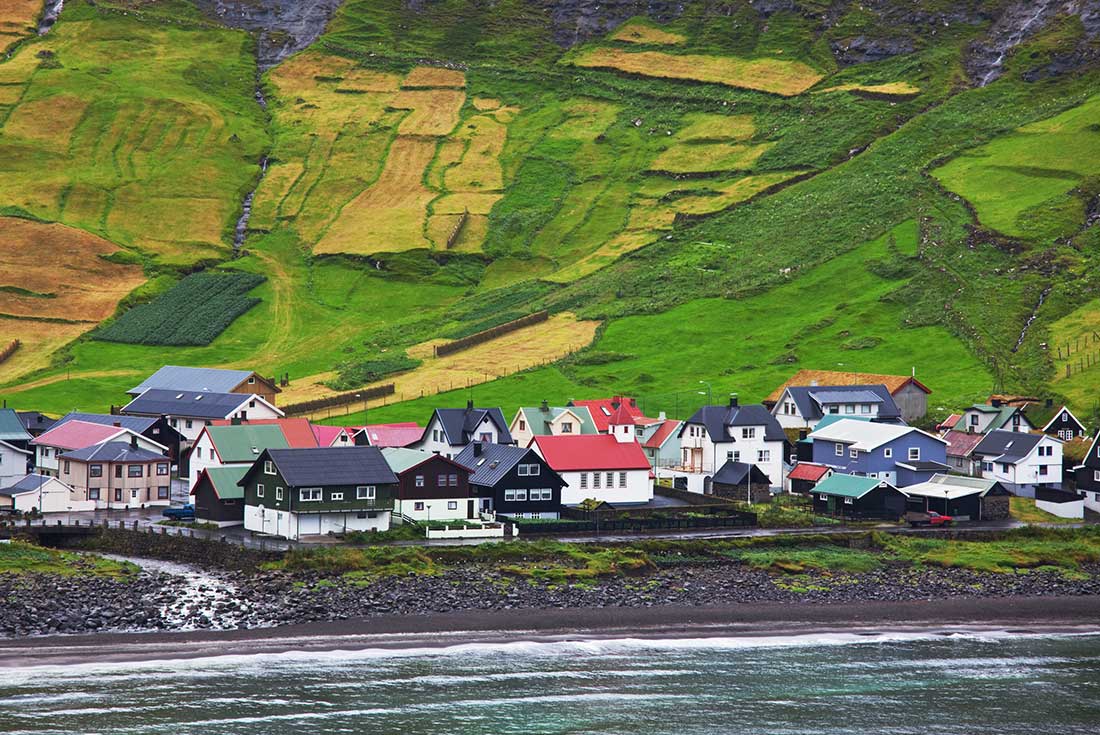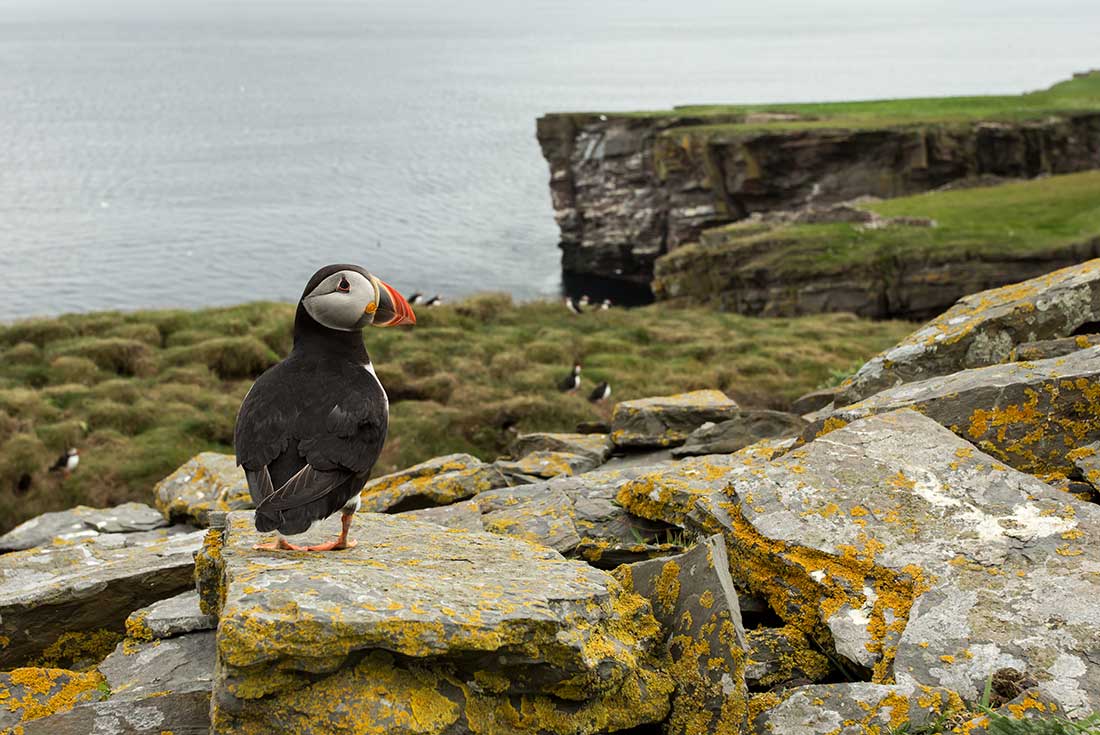Arctic Saga: Exploring Spitsbergen via the Faroes and Jan Mayen
Arctic Saga: Exploring Spitsbergen via the Faroes and Jan Mayen
$16290
Arctic Saga: Exploring Spitsbergen via the Faroes and Jan Mayen
14 Days Starting in Aberdeen, United Kingdom and ending in Helsinki, Finland
Visiting: Aberdeen, Fair Isle, Faroe Islands, Tórshavn, Jan Mayen, Svalbard and Jan Mayen, Spitsbergen, Longyearbyen, Helsinki
Tour operator:
Tour code:
BQMFJ
Guide Type:
Fully Guided
Group size:
1 - 138
Age range:
8-99
Tour operated in:
EnglishTrip Styles:
Interests:
Activities:
Tour Overview
Embark on an unforgettable journey with the "Arctic Saga: Exploring Spitsbergen via the Faroes and Jan Mayen" expedition. This 14-day adventure begins in Aberdeen, United Kingdom, and takes you through the remote beauty of the Faroe Islands, the volcanic landscapes of Jan Mayen, and the wildlife-rich shores of Spitsbergen, Svalbard. Experience the thrill of spotting puffins on Fair Isle, exploring Torshavn's Old Town, and witnessing the majestic glaciers of Hornsund. Travel aboard an expedition cruise ship, with accommodations and meals included, and enjoy the expertise of a knowledgeable Expedition Team. Conclude your Arctic exploration with a charter flight to Helsinki, Finland. This tour promises breathtaking landscapes, abundant wildlife, and a deep dive into the Arctic's natural wonders.
Highlights
Itinerary
Day 1: Arrive Aberdeen, United Kingdom
Location: Aberdeen
Accommodation Name: Hotel
Arrive any time on Day 1 and make your way to your included hotel. The gateway for your Arctic adventure, the Scottish city of Aberdeen has many monikers, but its most famous is Granite City, as it was once the granite capital of the world. Wandering the streets, you’ll soon see why, as the Victorian buildings sparkle in the sun. A bustling cultural hub, Aberdeen also offers a range of museums, galleries, theaters, shops, cafés and restaurants to explore.
Day 2: Embarkation in Aberdeen
Location: Aberdeen
Accommodation Name: Expedition Cruise Ship
Meals Included: Breakfast, Dinner
Today you will have some free time before being transferred to the port to board your ship. As you set sail this afternoon, you’ll want to be out on deck, camera in hand—the area’s coastal waters offer excellent possibilities for spotting bottlenose and white-beaked dolphins, harbor porpoises and minke whales.
Day 3: Exploring Fair Isle
Location: Fair Isle
Accommodation Name: Expedition Cruise Ship
Meals Included: Breakfast, Lunch, Dinner
The U.K.’s most remote inhabited island, the extraordinary Fair Isle is located halfway between the Shetland and Orkney Islands. Boasting a rugged beauty, Fair Isle’s landscape is diverse, with fields and moors dominated by seaside cliffs and an astounding number of sea stacks, natural arches and caves.Despite its small size, the island offers activities for history, nature and photography buffs alike. Visit the museum to immerse yourself in local artifacts, photos, knitwear and other historic memorabilia. Don’t forget to snap a shot of the circa 1935 classic red phone booth by the post office!In terms of wildlife, orcas are native to the waters around Fair Isle, and they sometimes come close in pursuit of seals. But the island is best known for its coastal cliffs teeming with seabirds in spring and summer. The star attraction is the Atlantic puffin, a clown-like bird that burrows in nests in the grassy flat tops of the island’s cliffs. Photographers will surely want to capture pictures of their bemused expressions, and Fair Isle’s easily accessible grassy banks make it one of the best places in the Shetlands (if not the entire Scottish Isles!) to observe these colorful creatures. Northern fulmars, kittiwakes, storm petrels, razorbills and guillemots may be spotted soaring over the open waters.Visitors to this community of crofters, artisans and artists may be able to pick up a traditional Fair Isle sweater to keep warm during the rest of your Arctic voyage.
Day 4-5 • Exploring the Faroe Islands
Location: Faroe Islands, Tórshavn
Accommodation Name: Expedition Cruise Ship
Meals Included: Breakfast, Lunch, Dinner
Known for its beautiful, unspoiled landscape, with verdant pastures giving way to rugged, steep cliffs, the Faroe Islands have a storied past, though the details of the archipelago’s early history remain mysterious. The first settlers may have been seventh-century Irish monks seeking solitude on these islands far removed from any continent. Their isolation ended in 800 AD, with the arrival of Norse farmers, and Norwegian colonization continued throughout the Viking Age. Today, many of the inhabitants of the Faroe Islands, now a self-governing country within the Kingdom of Denmark, are descendants of Norwegian Vikings, and speak Faroese, a descendant language of Old Norse. We will have two days to explore this seldom-visited archipelago made up of 18 rugged islands located about halfway between Scotland and Iceland. The mighty North Atlantic is omnipresent wherever we go with no place on the Faroe Islands farther than 3 miles (5 km) from its shores. The sea has always dominated life on the Faroes— throughout history as much as today: rich fisheries, magnificent ocean views and thriving sea bird colonies make up this rare Nordic jewel—often referred to as Europe’s best kept secret. We will spend a day exploring the outer islands of the archipelago, separated by narrow sounds and fjords, and delight in their surreal landscapes, dramatic cliffs, and rock formations. You’ll see green valleys engulfed by steep mountains, protecting picturesque villages with colorful turf-topped homes. Wind, weather and sea conditions will influence and shape our activity options, but we will of course always keep our eyes out for marine and bird life, especially the iconic Atlantic puffin. Our second day in the Faroes will be dedicated to the capital city of Tórshavn, where the Vikings established their government in 825 AD. One of the world’s smallest capitals, the picturesque Tórshavn has a relaxed vibe and a number of historical and cultural sites. Meander the maze of narrow laneways of the Old Town, admiring the quaint wooden houses with traditional sod roofs and white paned windows. If you’re looking for more action, a hike to historic Kirkjubøur not only unlocks some of the country’s best medieval history but also rewards with sweeping views over the southern islands of Koltur, Hestur & Sandur. Or perhaps you’ll prefer to wander the charming harbor, filled with cafés, pubs and old warehouses, and simply gaze out at the sea while sipping a latte.
Day 6-7 • At Sea
Location: Faroe Islands, Jan Mayen
Accommodation Name: Expedition Cruise Ship
Meals Included: Breakfast, Lunch, Dinner
Say goodbye to the Faroes as we cruise toward the world’s most northerly volcanic island, Jan Mayen. There are several activities to keep you engaged while at sea. Learn to identify seabirds gliding alongside your ship, attend dynamic presentations by your Expedition Team, relax in our polar library or simply spend some time on deck, admiring the ocean views. With your binoculars and camera at the ready, keep your eyes peeled for the blow of a humpback, blue or fin whale. Encounters with minke whales or orcas are also possible, since their curiosity can bring them near the ship. If you’re lucky, you may even see harp seals.
Day 8-9 • Exploring Jan Mayen
Location: Jan Mayen
Accommodation Name: Expedition Cruise Ship
Meals Included: Breakfast, Lunch, Dinner
North of the Arctic Circle, about 280 miles (450 km) east of Greenland and 340 miles (550 km) north of Iceland, the mysterious Jan Mayen rises from the depths of the North Atlantic Ocean. Often shrouded in thick fog, the small mountainous island was declared a nature reserve in 2010 and is rarely visited, save for the 18 rotating personnel of the Norwegian military and Norwegian Meteorological Institute, who are the only year-long inhabitants, save for some additional personnel during the summer. Landing here will be dictated by the weather and sea. If conditions allow, as we approach, keep watch on deck as the spoon-shaped island’s highest summit emerges. At 7,470 feet (2,277 meters) high, the breathtaking Beerenberg volcano features a symmetrical cone shape and impressive glaciers that spill into the sea. During the summer months, the island’s lower landscape is covered with grass, moss and a smattering of hardy flowers that add a burst of color to the otherwise barren black lava terrain. One site we hope to visit is Olonkinbyen and the surrounding area. Named after Russian-Norwegian polar explorer Gennady Olonkin, it’s the island’s only settlement and the location of the meteorological station, where you may have the chance to learn about polar research while seeing how weather is monitored at the top of the world. Another option might be the black sand beach at Kvalrossbukta, where the remnants of a 17th-century Dutch whaling station and a large northern fulmar colony can be found. In 1632, two Basque ships landed at the small bay and plundered the station. A Dutch party was sent here the following year to protect the land stations during winter, but all seven men perished from scurvy. Whaling in the area came to an end about 20 years later. If conditions permit, we may view the volcano and the stratified cliffs of the spectacular north coast as we Zodiac cruise around the island, searching for wildlife. Designated an Important Bird Area by BirdLife International for the large numbers of breeding seabirds, Jan Mayen supports colonies of northern fulmars, little auks, glaucous gulls, kittiwakes, and black and Brünnich’s guillemots (thick-billed murres). And if we are fortunate, you might see “sea parrots,” the Atlantic puffin again. The waters here are rich feeding grounds for marine life, so keep a lookout for minke, fin, blue or humpback whales.
Day 10: At Sea
Location: Svalbard and Jan Mayen
Accommodation Name: Expedition Cruise Ship
Meals Included: Breakfast, Lunch, Dinner
As we sail farther north, spend some time with your shipmates in the lounge, swapping stories and photos, or take the opportunity to learn about the regions travelled with your experienced and knowledgeable Expedition Team.
Day 11-13 • Exploring Spitsbergen, Svalbard
Location: Spitsbergen
Accommodation Name: Expedition Cruise Ship
Meals Included: Breakfast, Lunch, Dinner
Rugged, wild and situated entirely within the Arctic Circle, the largest island of the Svalbard archipelago is unforgettable. From immense glaciers to lush tundra to polar deserts, the landscape here is as varied as the wildlife. As we explore the fjords of the southwestern corner of this magical island, it won’t take long for you to see firsthand why Spitsbergen is the “wildlife capital of the Arctic.” Some areas we hope to visit include Hornsund and Bellsund fjords and Hornbreen Glacier. The possible landing sites at Hornsund, the island’s most southerly fjord, have rich histories. You may visit Isbjornhamna, a bay at the entrance of the fjord, where we hope to explore colonies of delightful little auks. You may also spot Svalbard reindeer and hike to a viewpoint for views of calving glaciers. A 12-mile (20 km) long sound, Bellsund lured miners a century ago to its natural resources. Today, visitors come to Bourbonhamna and Calypsobyen to see historic mining and trapper sites and marvel at the magnificent vistas. It may also be possible to hike along the colorful tundra, dotted with flowers bursting for a taste of sunshine, and discover old whale bones.
Day 14: Disembark in Longyearbyen and Fly to Helsinki
Location: Longyearbyen, Helsinki
Meals Included: Breakfast
The time has come to say farewell to your newfound friends and Expedition Team. After disembarking, spend the day exploring the frontier-style settlement of Longyearbyen before catching the charter flight to Helsinki.
What's Included
-
Accommodation
Expedition cruise ship (12 nights), Comfortable Hotel (1 night) -
Meals
13 breakfasts, 11 lunches, 12 dinners -
Transport
The tour includes transport by ship, Zodiac, and plane.
-
Charter Flight
A charter flight from Longyearbyen to Helsinki is included.
What's Not Included
Booking Conditions
A deposit of 25% of the total invoice amount is required at the time of booking, with balances due 120 days prior to departure.
Included Activities
Transport
- Ship , Zodiac , Plane
Accommodation
- Expedition cruise ship (12 nights), Comfortable Hotel (1 night)
Important Information
- This trip starts in Aberdeen, Scotland on day 1 and finishes in Helsinki, Finland
- In 2025 this trip duration is 14 days and finishes at Helsinki Airport late in the afternoon of day 14. We recommend booking an additional nights accommodation in Helsinki incase of flight delays.
- In 2026 this trip duration is 15 days and includes one nights hotel accommodation in Helsinki on day 14. You are free to depart anytime on day 15.
- In 2025 the trip is onboard the Ultramarine ship and in 2026 its onboard the Ocean Explorer ship
- Your voyage is operated by our polar partner, Quark Expeditions. All accommodation and transfer arrangements as listed in the itinerary are also operated by Quark Expeditions or their local representatives.
- BOOKING CONDITIONS
- To confirm your reservation, a deposit of 25% (unless indicated otherwise at time of booking) of the total invoice amount is required at time of booking. Balances are due 120 days prior to departure.
- Please refer to the "Booking terms and conditions" page on our website for all Quark Expedition terms and conditions. https://www.intrepidtravel.com/booking-intrepid/booking-conditions
Mode of Transport
Travel in style with an expedition cruise ship, Zodiac, and plane, offering a seamless and adventurous journey through the Arctic's stunning landscapes.
Accommodation
Enjoy 12 nights aboard an expedition cruise ship and 2 nights in a comfortable hotel, providing a blend of adventure and relaxation throughout your Arctic journey.
Check out our Q&As
-
What kind of wildlife can I expect to see during the tour?
During the tour, you can expect to see a variety of wildlife including puffins, orcas, seabirds like northern fulmars and razorbills, reindeer, auk, polar bears, and possibly whales such as humpback, blue, fin, and minke whales.
-
What activities are available on Fair Isle?
On Fair Isle, you can visit the local museum to learn about the island's history, take photographs of the iconic red phone booth, and observe wildlife such as orcas and seabirds, especially the Atlantic puffin.
-
What can I do while at sea during the cruise?
While at sea, you can engage in activities such as identifying seabirds, attending presentations by the Expedition Team, relaxing in the polar library, or spending time on deck watching for marine life like whales and seals.
-
What is the significance of Jan Mayen Island?
Jan Mayen Island is a remote, mountainous island known for its volcanic landscape, including the Beerenberg volcano. It is a nature reserve with a small population of Norwegian military and meteorological personnel. The island is also an Important Bird Area with colonies of seabirds.
-
What historical sites can be explored in the Faroe Islands?
In the Faroe Islands, you can explore the capital city of Tórshavn, which has historical and cultural sites, including the Old Town with its traditional wooden houses. You can also hike to Kirkjubøur, which offers medieval history and views of the southern islands.
-
What is the final destination of the tour and how do we get there?
The final destination of the tour is Helsinki, Finland. After disembarking in Longyearbyen, you will spend some time exploring the settlement before taking a charter flight to Helsinki.
-
What policies are in place for Covid-19?
Please contact us for latest COVID-19 policies
-
How long has the tour company been trading?
Intrepid Travel has been taking travellers around the world for over 30 years
-
Will the accommodation included meet local health and safety regulations?
Yes
-
What Ethical Travel credentials does the tour company have?
Since 2002, The Intrepid Foundation has supported over 130 organisations across the world. We’re creating positive impact through the joy of travel, community and connection.
-
Do you operate a “single share” option and how does it work?
Over 50% of traveller travel solo with Intrepid. You can choose to share a room with another solo travelle of the same sex for no additional charge, or choose to pay a single supplement if you’d like your own room. Please request this when booking, and we will secure you a single supplement wherever possible. Please note, if you are booking a last-minute trip, it may be harder for us to secure a single room
Reviews of this operator
1 Select your preferred date
Tuesday - Monday
Apr 29, 2025 - May 12, 2025Saturday - Friday
May 02, 2026 - May 15, 2026Book with Confidence
-
Free Date Changes
Intrepid Travel allows you to make 10 free date changes, as long as the change is made at least 56 days before the start of the tour.
-
Transfer as credit to Future Tours
Intrepid Travel allows you to transfer existing payments to a future tour to avoid cancellation fees if you can't travel and inform intrepid travel, 56 days before departure.
-
Low Deposit
Intrepid Travel requires a minimum deposit of 400 USD per person or the full booking value, whichever is less, with the final balance not due until 56 days before departure.
-
Cancellation Policy
We don't charge a cancellation fee, here is a summary of intrepid travel charges.
Up to 56 days before tour starts: Forfeit 100% of deposit.
At 55 days before tour starts: Forfeit 30% of booking price.
At 30 days before tour starts: Forfeit 60% of booking price.
At 14 days before tour starts: Forfeit 100% of booking price.
-
Terms and Conditions

